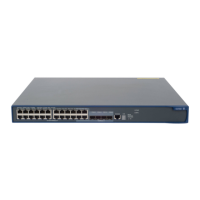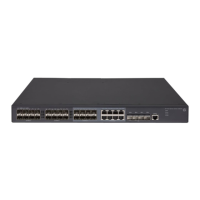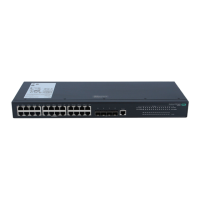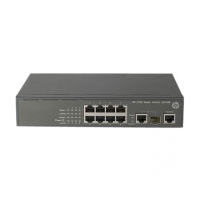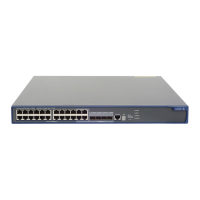197
Step Command Remarks
2. Enter BGP view or BGP-VPN
instance view.
• Enter BGP view:
bgp as-number
• Enter BGP-VPN instance view:
a. bgp as-number
b. ip vpn-instance
vpn-instance-name
N/A
3. Specify the source interface
for establishing TCP
connections to a peer or peer
group.
peer { group-name | ip-address }
connect-interface interface-type
interface-number
By default, BGP uses the outbound
interface of the best route to the
BGP peer or peer group as the
source interface for establishing a
TCP connection to the peer or peer
group.
To specify the source interface for TCP connections (IPv6):
Step Command Remarks
1. Enter system view.
system-view N/A
2. Enter BGP view or BGP-VPN
instance view.
• Enter BGP view:
bgp as-number
• Enter BGP-VPN instance view:
a. bgp as-number
b. ip vpn-instance
vpn-instance-name
N/A
3. Specify the source interface
for establishing TCP
connections to a peer or peer
group.
peer { group-name |
ipv6-address } connect-interface
interface-type interface-number
By default, BGP uses the outbound
interface of the best route to the
BGP peer or peer group as the
source interface for establishing a
TCP connection to the peer or peer
group.
Generating BGP routes
BGP can generate routes in the following ways:
• Advertise local networks.
• Redistribute IGP routes.
Injecting a local network
Perform this task to inject a network in the local routing table to the BGP routing table, so BGP can
advertise the network to BGP peers. The ORIGIN attribute of BGP routes advertised in this way is IGP.
You can also use a routing policy to control route advertisement.
The specified network must be available and active in the local IP routing table.
To inject a local network (IPv4):
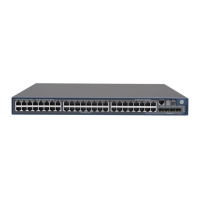
